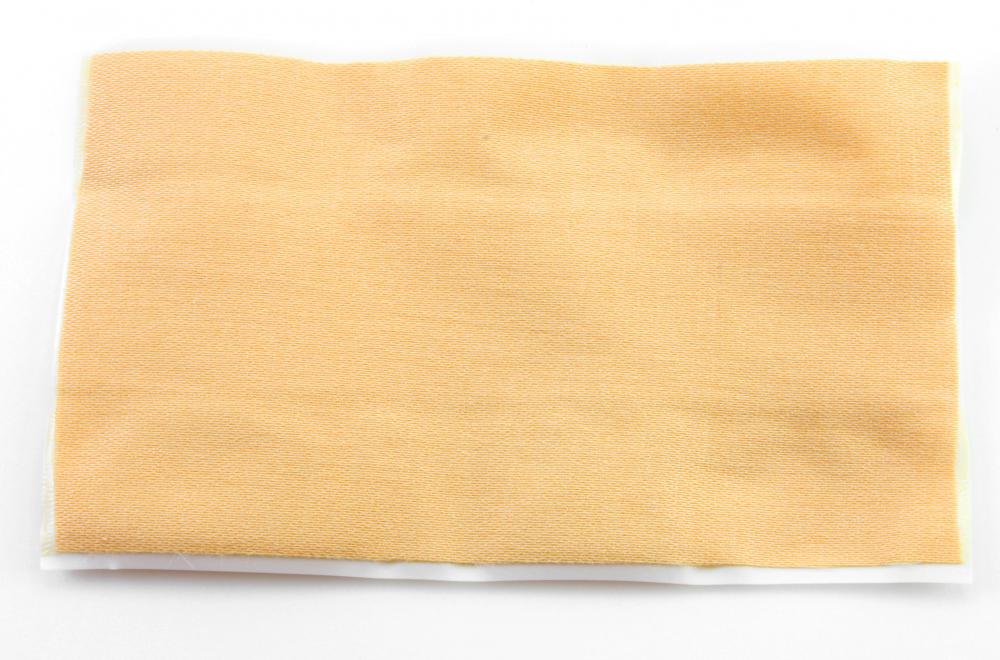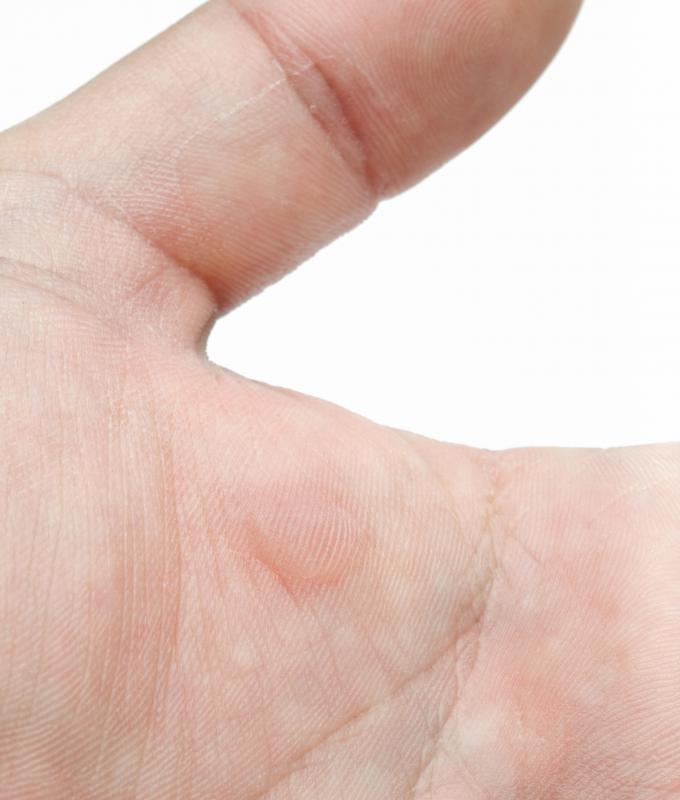At WiseGEEK, we're committed to delivering accurate, trustworthy information. Our expert-authored content is rigorously fact-checked and sourced from credible authorities. Discover how we uphold the highest standards in providing you with reliable knowledge.
How Do I Treat an Infected Blister?
Blisters can arise from a variety of causes, ranging from heat to friction. The tissue around a blister forms a seal around the exposed skin, keeping out infection on the majority of occasions. At times, however, infectious organisms may be able to access the underlying pus and tissue, rapidly forming an infection. Care must be used when treating an infected blister, as only the proper procedures can reduce the risk of spreading the infection to other parts of the body.
An infected blister often is noticed when the pus changes in color from clear to a white or yellow tone. They are also often more painful, with pain even extending to the area around the blister. Most of the time, the blister will heal of its own accord if it is simply left alone. Individuals with blisters they suspect of infection should therefore try to leave them alone at first, to see if the fluid begins to re-absorb into the body of its own accord. Blisters should not be touched, so as to avoid passing germs to or from the blister with the hand.

Piercing a blister, especially an infected one, is never a viable treatment option. Even if the needle or tool used to pierce the blister is sterile, it will break the outer layer that prevents germs from getting in. In turn, this increases the chances of a worse infection that could start from airborne germs.
To protect the infected blister and keep it from breaking, it is best to cover it. Small pieces of plaster or cloth can be used to wrap smaller blisters. A gauze pad taped to the skin around the blister can be used to safeguard a larger blister. Soft, sterile cloth dressings can be used to cover up blisters on the toes, or others that are in danger of popping. Dressings should be changed on a daily basis to keep them clean.

An ice pack may be used sparingly on painful blood blisters, but should be applied over the cloth or plaster covering, never directly to the blister. In the event of an infected blister, medical attention should usually be sought. Prescription antibiotics will heal the infection, and keep it from potentially spreading through the bloodstream. This decision is even more essential if the individual suffering from the blister already has a preexisting skin condition, or a particular susceptibility to bacterial infection.
AS FEATURED ON:
AS FEATURED ON:















Discussion Comments
Here is my question: Yesterday, I suffered a nearly circumferential burn on my wrist to about 5 or 6 inches down my forearm. Most of this burn seems to be first degree (red, and a little painful), but right on the inside of my wrist (slightly proximal to the styloid processes of my radius and ulna -- does that still count as my wrist?) I've developed a large, swollen blister about size of a large thumbprint (measured against my thumb, it goes from the tip to the nearest knuckle).
This blister first developed within 30 minutes of receiving the burn, after I ran cold water on the site for 20 minutes to ease the initial pain. It was small then, but definitely yellow in comparison to clear blisters I've received in the past. Since then, it's swollen to the aforementioned size and has remained yellow.
I'm wondering if this is indicative of an infection? I was under the impression that blisters not initially born from infectious agents only became infected if invaded (i.e., pre-existing clear serum turns yellow), and not immediately upon formation?
I got burned on my arm like three days ago and I popped my blister and now it's scabbing over, but it's a little pink around it and it's healing. I'm nervous it might be infected because it hurts?
@alisha, @simrin-- I run marathons and blisters are a common occurrence. I've tried soaking infected blisters in epsom salt before, it works well. If it's popped, it will burn a little but good for clearing up an infection.
Aside from this, I just wash the area with oxygen water. It's a disinfectant you can get at the pharmacy and it doesn't burn. Then I put a combination of vaseline and antibacterial cream on it. Finally, I cover it with gauze and tape the sides. Vaseline creates a nice shield on the blister and keeps germs from going in and the cream kills the bacteria that's already there.
This is a like a foolproof way to clean up an infection. Gauze is a lot better than band-aids for this because it lets the blister breathe and dry out. You should give this a try.
@alisha-- You might want to keep the bandage off. If the topical cream is not working, try tea tree oil. I've found that tea tree oil works wonders for these kind of things. It's all natural and has anti-bacterial properties. However, make sure to dilute it or use one that's safe on skin or it might be too strong. I've also heard that soaking the feet in salty warm water is good for treating infected blisters.
Of course, if none of this works and the infection gets worse, see your doctor right away. Rarely, infections can get out of control and cause serious damage. And your doctor might want to have it drained and cleaned at the hospital. For a very serious infection, you might need to take oral antibiotics. Just keep an eye on it! I hope the natural remedies work for you though.
I have a blister on my foot because of a new pair of shoes I wore for the first time last week. I didn't touch the blister, but it burst on its own and the fluid leaked out. I left it alone even then, but after a day, it was hurting a lot more and looked like it was developing a yellowish pus.
I was afraid of an infection and put some antibiotic ointment on it and a band-aid. Today, I opened the band-aid to see and it has become very watery and it still looks yellow. If I keep putting antibiotic cream on it, it's never going to dry and scab over. If I don't, I'm afraid that the infection will spread.
What should I do?
Post your comments